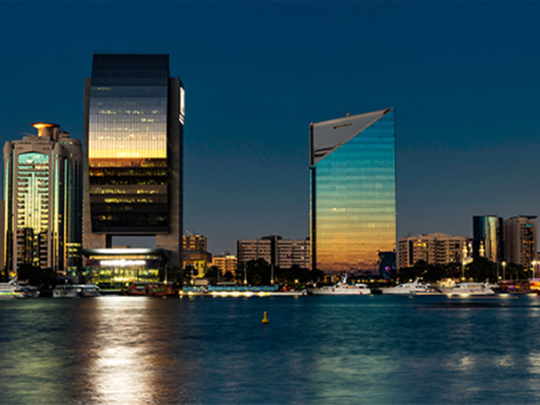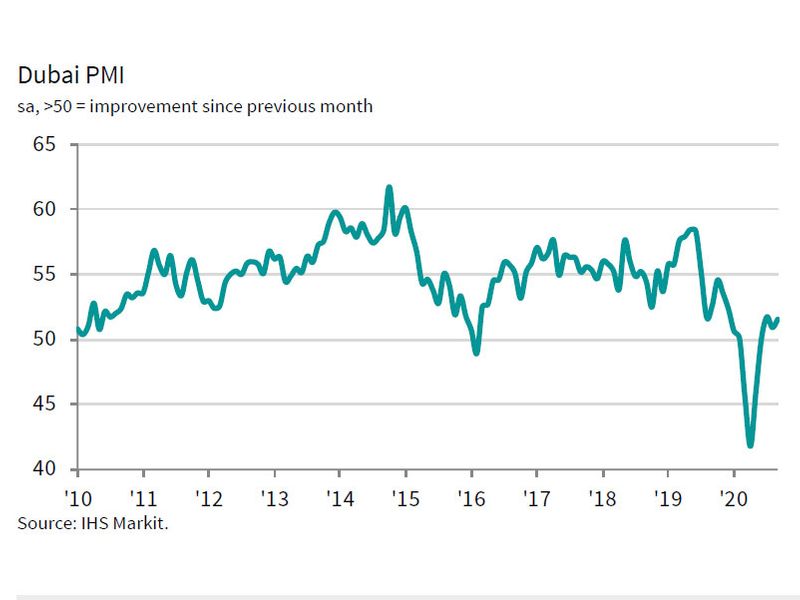
Dubai: The Dubai non-oil private sector continued to keep up the recovery momentum in September with another modest improvement in business conditions, according to the Purchasing Managers’ Index.
The IHS Markit PMI data for last month showed overall activity and new business rose at faster rates than in August, with demand growth reaching a ten-month high. As a result, the decline in employment slowed to a moderate pace, while business expectations improved slightly.
“September PMI data finalised a third-quarter period of modest economic recovery in Dubai. The PMI has consistently remained above the 50.0 no-change mark

since July, as business activity grew during the easing of COVID-19 restrictions,” said David Owen,Economist at IHS Markit.
The headline Dubai PMI posted at 51.5 in September, indicating a third successive monthly improvement in the performance of the non-oil private sector. The index rose from 50.9 in August, but remained below that seen in July and markedly down on the series average of 54.7.Nevertheless, the latest survey data indicated stronger increases in both output and new business across the private sector in September. Notably, the rate of sales growth reached the strongest for ten months, driven by reports of higher client demand and the starting of new projects as more economic activity resumed.
Key sectors rebound
The wholesale & retail sector saw another sharp rise in new orders during the month, with growth near-matching that seen in August. The strong upturn led a modest rise in construction work.
Travel & tourism business continued to decline, albeit at the slowest pace since February. In line with recent survey periods, firms in the Dubai non-oil sector reported price cuts during September in an effort to boost sales. The rate of discounting slowed from August, but was still solid and partly accountable for the rise in sales.
Meanwhile, output levels expanded solidly for the fourth month in a row, as firms noted efforts to build activity back to pre-virus levels. That said, evidence of further cuts to jobs highlighted the need for some firms to reduce staff expenses. On a positive note though, the fall in employment was the weakest in seven months.
Improving expectations
“Employment data signalled a cautious outlook as firms often shed workers to manage cost pressures and enable discounting,” said Owen.
Business expectations regarding the year ahead ticked up at the end of the third quarter. Hopes of further growth were largely linked to a recovery in sales as COVID-19 lockdown restrictions are eased.








